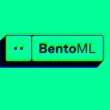Cybersecurity is facing new challenges with advances in AI, cloud tech, and increasing cyber threats. Solutions like blockchain are emerging to support data security and trust.
Cybersecurity faces considerable challenges in light of recent technological developments, from artificial intelligence to exposed programming vulnerabilities. At the same time, emerging attacks on cloud, hardware, and machine learning hinder business progress as hackers and illicit actors create subtle but complex breaches and other similar threats.
As companies find it more difficult to withstand these issues, new solutions such as blockchain technology arise to push for top-notch security and innovation. Digital ledgers are transparent and immutable, borrowing safety features from their consensus mechanisms.
An example of such blockchain is Tron, an ecosystem whose tools offer developers opportunities to use smart contract technology to create decentralized applications. The native token powers up the network, so the TRX price is influenced by the bandwidth efficiency, which dictates the level of network congestion.
The Tron blockchain is only one of the emerging technologies whose features can protect customers’ data integrity in the real world. Here’s how.
Blockchain and cybersecurity audits
Cybersecurity audits are imperative in this fast-paced world of changing technologies. First, audits help identify and mitigate upcoming risks, comply with regulations, and maintain business continuity. Still, not all companies perform the audit correctly, considering it can extend for a longer period.
That’s why blockchain could be used for cybersecurity audits. Since the ledger is immutable, every data record is tamper-resistant, meaning no one can interfere with and modify data sets. Therefore, the blockchain becomes a tool for tracking and assessing security incidents. At the same time, since blockchain data is transparent to anyone, it’s easier to decide if the data complies with current regulations.
A blockchain audit can also target special attacks for the ledger, from 51% attacks to smart contract vulnerabilities. Some of its key components include the following actions:
- Code review of the smart contracts;
- Network architecture examination;
- Consensus mechanism assessment;
- Private key analysis;
- Third-party integrations;
Blockchain and threat response
Threat response management involves all the tools and actors involved in acting as fast as possible upon a cybersecurity alert. Identifying, containing, and mitigating a threat are essential methods to avoid further problems of data theft, financial trouble, and damage to brand reputation.
Blockchain’s automation features are the best solution for automating these responses in case of an incident. The digital ledger leverages real-time data on threats in a decentralized manner, so the response won’t further compromise data security. Decentralization and automation also establish another layer of security over ecosystems due to the complexity of manipulating the system.
One of the best features for indecent response involves smart contract automation. Developers can establish code that automatically triggers the smart contract to operate when certain conditions are met, such as a cyberattack. For example, when the blockchain identifies signs of an attack, such as employees receiving strange emails or noticing redirected internet searches, the smart contract immediately notes important components and isolates the attack as efficiently as possible.
Blockchain and DDoS protection
A distributed denial-of-service attack can exploit multiple sources of data traffic, from computers to IoT devices, to achieve maximum effectiveness in disrupting a server’s regular traffic. Malicious attempts are one of the most challenging to deal with as an IT infrastructure, and there are many types of DDoS attacks, each with unique features.
Blockchain technology can protect servers from such risks by increasing resilience and improving service availability. The distributed network leverages scattered resources across the ledger, employing multiple points of control. Therefore, it’s considerably difficult for hackers to overwhelm all the nodes with traffic, lowering the chances of this happening at all.
The digital ledger strategy can help companies absorb and mitigate attacks, offering them a chance to continue operating even when pressed on a potential attack. Hence, no attack can lead to disruptions, making it achievable for businesses to navigate such challenges.
Blockchain and Zero-Trust security models
The Zero Trust security method of protecting networks is one of the latest and most efficient strategies for addressing the challenges of modern infrastructure. In this model, everyone involved in the organization must comply with authentication, authorization, and validation requirements to access data and applications.
Since this process can require time and resources, the best option is to approach blockchain technology to settle it. A digital ledger is much more efficient for identity verification and access control because it eliminates unauthorized access and, therefore, insider threats.
The blockchain ensures that every access request is thoroughly analyzed, regardless of its origins, to secure the ecosystem. This means the ledger can better respond to suspicious activities in real time.
Blockchain and file storage
Storing data files is necessary for every enterprise because they contain important information supporting its development and innovation. However, considering their values, companies must extensively protect these resources from unauthorized access, whether accidental or deliberate.
Currently, most companies work with centralized storage systems, which are considerably exposed to threats. On the other hand, a decentralized approach is superior as it distributes the information across an expansive network, eliminating the risks of a single point of failure. Therefore, data sets are less exposed to breaches as privacy is secured.
That’s because blockchain decentralization ensures file storage by fragmenting and encrypting the files before distributing them across the network and multiple nodes. So, even if one or a few nodes are compromised, the data still lives within others, making it inaccessible to unauthorized access.
Critical data can be safe and valuable even during cybersecurity threats due to efforts to maintain resilience and data availability. At the same time, the multiple nodes and access points on the blockchain make it easy for a plan to be established to navigate a potential attack.
What do you think about blockchain for cybersecurity?
In a fast-paced world of technology where data is most important for companies and users, we ought to find improved ways to safeguard information. Blockchain is capable of creating a new era of data security in which resilience is prioritized. For example, blockchain can perform enhanced data audits, respond to threats in no time, and store files across multiple nodes. Therefore, it brings a more efficient method of ensuring data security.
Editor’s Note: This content is for informational purposes only and should not be considered financial, investment, or legal advice. Always consult a professional for guidance tailored to your specific situation.
RELATED TOPICS
- Is the Blockchain Secure? Yes, and Here’s Why
- Signal21 Beta Launch Bridges Gap in Blockchain Intel Services
- Ethereum’s Layer 2 Solutions Could Outrun the Main Blockchain
- Blockchain in Identity Management: Securing Data and Identities
- Blockchain and Smart Contracts in Securing Digital Transactions
Top/ Featured Image source: Freepik









